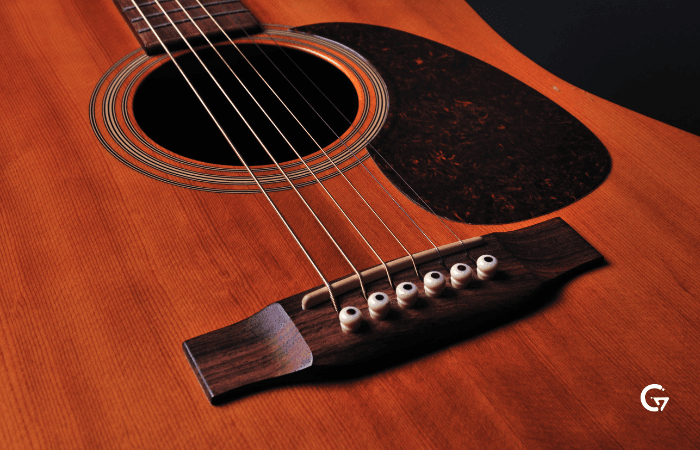Are you a budding guitarist, eager to strum your way into the world of music? One of the fundamental aspects of learning the guitar is understanding its anatomy, and a crucial part of that is knowing the guitar string names. Whether you're a complete novice or someone looking to brush up on the basics, this comprehensive guide will walk you through everything you need to know about guitar string names, numbers, and their order.
Understanding Guitar String Names
Before diving into playing your favorite tunes, it's essential to familiarize yourself with the names of the strings on your guitar. Starting from the thickest string to the thinnest, here are the standard guitar string names:
E String (6th String): The thickest string on a standard guitar is known as the 6th string or the low E string. Its pitch is E2, and it produces the lowest tones on the instrument.
A String (5th String): Moving towards the higher pitches, the 5th string is referred to as the A string. Its pitch is A2, slightly higher than the low E string.
D String (4th String): Next in line is the D string, occupying the 4th position. Its pitch is D3, continuing the ascent in tone.
G String (3rd String): The G string takes the 3rd spot on the fretboard. Its pitch is G3, adding to the melodic range of the guitar.
B String (2nd String): Penultimate in the sequence is the B string, positioned 2nd from the bottom. Its pitch is B3, offering a higher register.
High E String (1st String): Finally, the topmost string is the high E string, also known as the 1st string. Its pitch is E4, producing the highest tones on the guitar.
The Importance of Knowing Guitar String Names
Understanding guitar string names is vital for several reasons, especially for beginners:
Tuning:
When tuning your guitar, whether manually or with the help of a tuner, knowing the names of the strings is crucial. Tuning pegs are adjusted to ensure each string produces the correct pitch, and knowing their names helps in this process.
Learning Chords and Scales:
As you progress in your guitar journey, you'll come across various chords and scales. Knowing the string names enables you to read chord diagrams and scale patterns accurately, making it easier to play different musical compositions.
Communication:
Whether you're discussing guitar techniques with fellow musicians or seeking guidance from instructors, knowing the names of the guitar strings facilitates effective communication within the musical community.
Guitar String Numbers: A Handy Reference
In addition to their names, guitar strings are also identified by numbers, which correspond to their thickness or gauge. Here's how the string numbers typically correlate with their names:
6th String (Low E): Thickest string, usually denoted as "6" in tablature.
5th String (A): Second thickest string, often labeled as "5" in tablature.
4th String (D): Middle string, identified as "4" in tablature.
3rd String (G): Slightly thinner than the previous strings, represented as "3" in tablature.
2nd String (B): Second thinnest string, denoted as "2" in tablature.
1st String (High E): Thinnest string, typically labeled as "1" in tablature.
Knowing the guitar string numbers serves as a quick reference, especially when reading guitar tablature or discussing specific fret positions.
Beginner Guitar Strings Names in Order
For beginners, memorizing the order of guitar string names might seem daunting at first. However, with consistent practice and repetition, it becomes second nature. Here's a mnemonic to help you remember the string names in order:
Eddie
Ate
Dynamite
Good
Bye
Eddie
Remembering phrases or acronyms like this can aid in recalling the sequence of guitar string names effortlessly.
Guitar Strings Names and Numbers: Putting It All Together
Now that you understand the names, numbers, and order of guitar strings, let's put this knowledge into practice. Whether you're strumming chords, picking melodies, or practicing scales, here are a few tips to help you navigate the fretboard confidently:
Start Slow: As a beginner, take your time to familiarize yourself with the guitar strings. Practice plucking each string individually and saying its name aloud to reinforce your memory.
Use Visual Aids: Utilize chord diagrams, scale charts, and tablature to visualize the placement of your fingers on the fretboard. Pay attention to the string numbers indicated on these visuals to ensure accuracy.
Practice Regularly: Like any skill, mastering the guitar requires consistent practice. Set aside dedicated practice sessions to strengthen your muscle memory and improve your proficiency in identifying guitar string names and numbers.
Seek Guidance: Don't hesitate to seek guidance from experienced guitarists or instructors if you encounter challenges along the way. They can offer valuable tips and personalized feedback to help you progress effectively.
Conclusion Learning guitar string names, numbers, and their order is an essential step in your journey to becoming a proficient guitarist. By understanding these fundamental concepts, you lay a solid foundation for further exploration and growth in your musical pursuits.
Whether you're strumming chords, fingerpicking melodies, or improvising solos, let your knowledge of guitar string names guide you along the path to musical excellence. So, pick up your guitar, tune those strings, and let the music begin!
Remember, practice makes perfect, and with dedication and perseverance, you'll soon be rocking out to your favourite tunes with confidence and flair.
Happy strumming!



